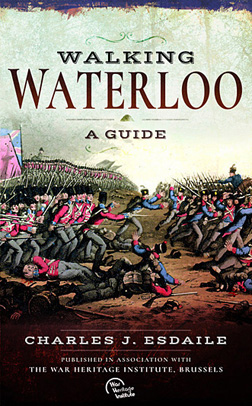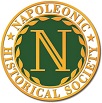Walking Waterloo: A Guide
 Walking Waterloo: A Guide, Charles Esdaile, 2019, Pen and Sword Books, 300 pages.
Walking Waterloo: A Guide, Charles Esdaile, 2019, Pen and Sword Books, 300 pages.
Waterloo is unquestionably the most famous and most visited of the Napoleonic battlefields. This has always been a source of frustration for me, as it tends to give a false view of the era to those who do not delve more into its history. But I might as well howl at the moon. I have myself visited the battlefield over a dozen times, for it is what most people wish to visit first. If you have to visit this famed field, you must either go with an experienced guide, or have a good written guide. This book attempts to be the latter and has succeeded admirably. I was initially curious about the author doing this work, as Dr. Esdaile is well known, deservedly so, for his expertise on the Iberian Peninsula during the Napoleonic wars. What did he know of 1815? Further, I looked with a somewhat jaundiced eye at him doing this subject, because he has made no attempt to hide his dislike of Napoleon. But an author and scholar of his standing deserves a read. While he admits being partisan towards the British, he is also the most fair and equitable historian in that camp today when covering the wars. So, I knew his predilections when I read his latest book. What I found was a first-rate guide book.
The book is organized in chapters for each major phase of the battle. The details are clear and accurate. Each chapter quotes participants describing their individual view of the events of June 18, 1815. There are good maps, and they are inserted in convenient places in the narrative. The author gives clear and concise directions for walking the field, with the landmarks described, and instructions for orienting the reader as to what he is seeing. Even three years after my last visit, so good is his treatment I could easily envisioned what he was describing. I could quibble here and there about emphasis. For example, I wish there was more coverage of the Prussian front, but this is a small complaint. In fact, he gives many details of the battle that are often ignored in favor of a strictly British narrative. For example, his description of the fighting around Papelotte is especially well done. I found little or no anti-French prejudice in the book and I expect that other readers would agree.
While I would liked a page or two added here and there, I realize that a publisher does not have unlimited space, and that if too long there is a risk of losing all but the most hard-core readers.
This book is far better than any single volume guide that has been heretofore created. I would heartily recommend it to anyone planning a visit and commend Dr. Esdaile for a job well done.
Reviewed by Todd Fisher
